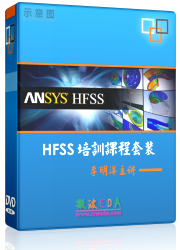- HFSS15在線幫助
- 首頁
- HFSS教學(xué)
- HFSS 15 在線幫助文檔
Technical Notes
Transient Solution Theory
An important advantage of the Finite-Element Method (FEM) is its ability to solve Maxwell’s equations on an unstructured mesh [1]. In such a mesh, the elements have a range of sizes and orientations such that, rather than forming a regular grid, they conform to the geometry of the model, respecting all its details. The use of unstructured meshes, combined with automatic mesh adaptation in HFSS Frequency Domain, has been instrumental in delivering accurate results for complicated geometries.
So far, commercially available solvers based on time-domain methods have relied on the Finite Difference Time Domain method (FDTD) [2] or on the closely related Finite Integration Technique (FIT) [3]. The use of unstructured meshes for both schemes presents technical difficulties that have yet to be overcome, and thus both FDTD and FIT continue to rely on brick-based space partitioning.
Time-domain methods developed for unstructured meshes such as the Finite Volume Time Domain (FVTD) [4, 5] or the Finite Element Time Domain (FETD) [6] methods do not offer an acceptable trade-off between accuracy, speed and memory usage. However, recent advances in finite-element techniques have led to a new scheme based on the Discontinuous Galerkin [7] family of numerical methods. This scheme retains the flexibility, accuracy and reliability of unstructured-mesh finite-element methods but avoids the solution of a large matrix equation at each time step. Instead, in the Discontinuous Galerkin Time Domain (DGTD) method, each mesh element advances in time using its own time step in a synchronous manner. This results in a significant speed-up on unstructured meshes as the largest mesh elements typically take time steps that are two to five orders of magnitude larger than those of the smallest mesh elements.
This chapter provides an explanation of how the DGTD method has been implemented in HFSS Transient.
Discontinuous Galerkin Finite Element Method
Local Time Stepping
Materials in Time Domain
Excitations in Time Domain
Analysis Setup in Time Domain
Target Residual for Transient Analysis Duration
References for Time Domain
-

國內(nèi)最全面的HFSS培訓(xùn)課程,包含7套視頻教程和2本教材,資深專家講解,視頻操作演示,結(jié)合最新工程案例,讓HFSS學(xué)習(xí)不再難...【詳細(xì)介紹】





